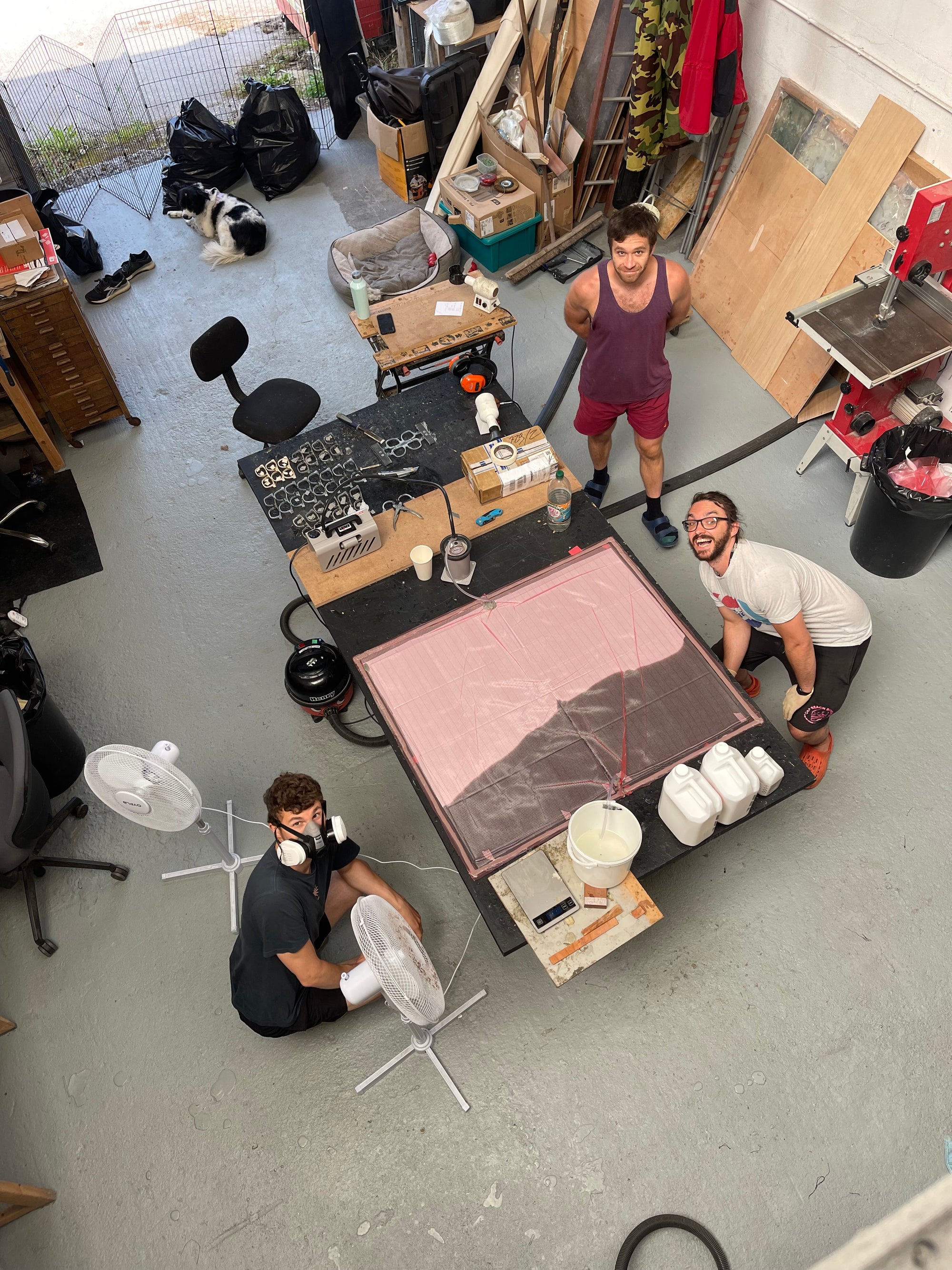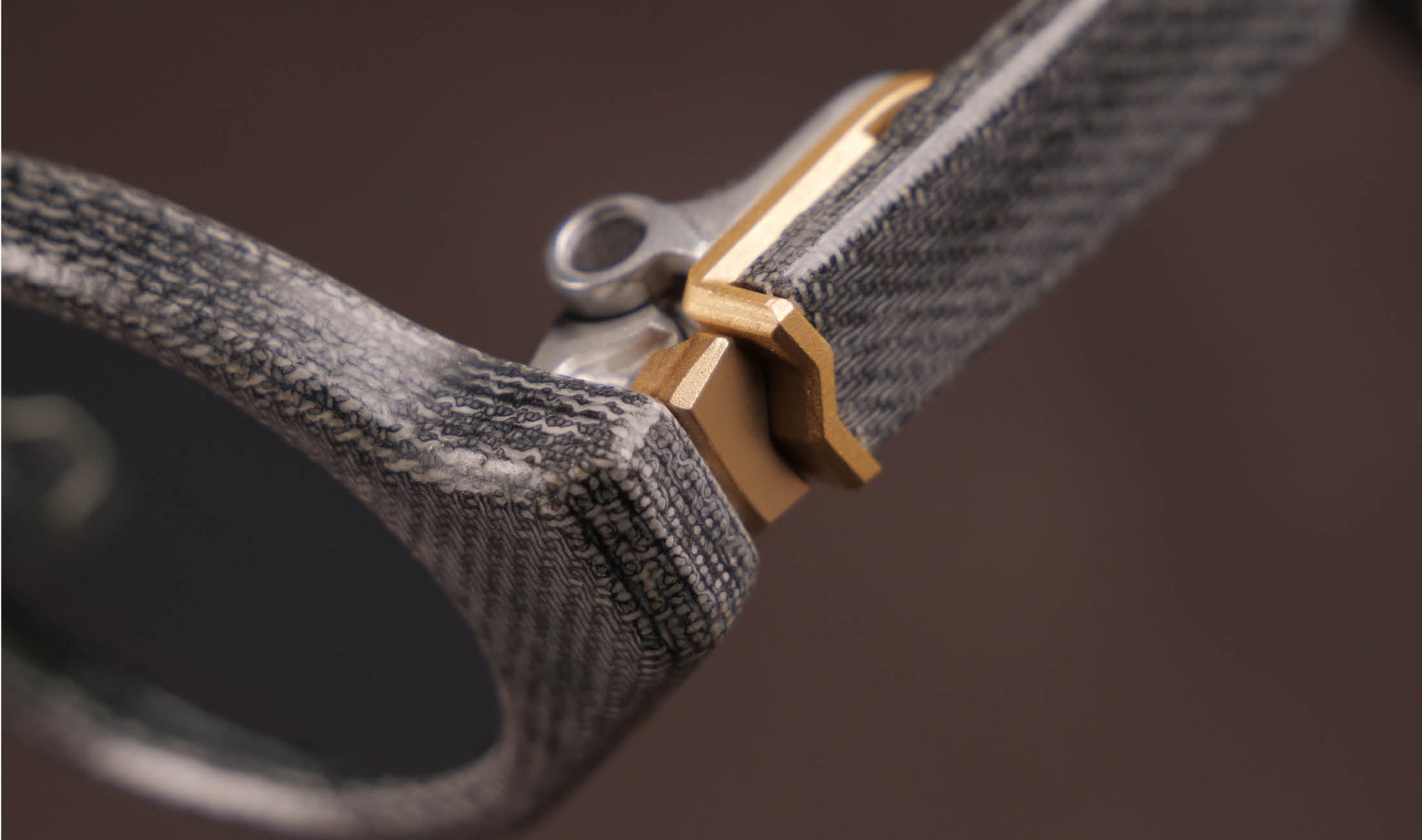
Journal 23 - The latest resin innovations at Mosevic!
By Mosevic Eyewear
If you’re new here you might be wondering ‘Why are you talking about resin when your frames are made out of denim?’ and that would be a valid question.
Sunglasses and frames are typically made out of metals such as titanium or carbon fibre, or plastics such as Nylon or polyamide. Deciding to use denim is seen to many as a rouge choice of material, but to Jack who has been developing these handmade frames over the last decade it just made sense.

We won’t profess to being the first company to infuse resin into a material! This has been done time and time again and for a variety of uses, so much so it has its own name ‘Micarta’. It can and has been used for a variety of purposes, knife handles, electrical insulators, ship building and now our handmade denim frames! Why do we think it’s great? We have managed to create an incredibly durable, lightweight, unique material and we think it makes the perfect frame that isn’t quite like anything else you might find. A truly unique designer piece you may say?
So lets dive into the process a little further, and discuss how we have developed and made our own denim micarta.
Until recently the denim and resin infusion took place when Jack was in his workshop and rather lonely after we had all gone home.
You will have been likely to see this crazy method on one of Jacks many videos, take a look for yourself below!
But since then, like many creations and developments, our processes have evolved! And over the last few months as Jack has been working hard on the next generation of our frames (lets keep this secret between you and I). Will and Karl have taken the resin infusion into their own fair hands. Mosevic frames start their lifecycle using vacuum infusion (We will talk about how this process works more later). There are a few major benefits to using vacuum infusion to make our material.
- We can make more material in one go.
- You end up with a completely even pressure over the material which means a more consistent results and less work for us later on to repair inconsistencies in the material.

Vacuum resin infusion isn’t that old, and its first uses only date back to 1945, but the history of resin dates back much further than this, to 1700 BCE. Historically resin infusion has been used in ship building, in the modern day it is being used to make electrical equipment, knives and even our denim eyewear!
Like many things it can be hard to track down the true history, but the history of resin seems to date back to 1930s Germany by a man named Paul Schlack, a German Chemist. Around a similar time another type of epoxy resin was showing up from Swiss chemist Pierre Castan. In its early days it was used in the dental industry, and then started being used by artists and jewellers alike. Epoxy resin is now widely available for arts and crafts use.

As mentioned earlier our newest process of infusing our denim with resin has been a long time coming, and we are not the first to do it in this way. We are lucky to have friends in the industry who have given us a lots of helpful tips and advice on how best to do it. Take a look at one of our first trials (we tried infusing resin into freshly groomed dog hair!) we have developed it a lot since this stage. We have tried different faster drying resins, different quantities, different ways of setting up our vacuum, and also purchased a big slab of glass which is used as our mould. If we were wanting to create different shapes for particular reasons we would need a different mould (See below an example of some ship building moulds).

Lets learn a little bit more about our current set up then, starting with the mould.
Did you know glass has tiny tiny holes in it?
Well neither did I until a few weeks ago! Jack and Will enlightened me on this matter following a failed resin infusion experiment, with Will joking that I would have to ‘Caressingly massage the glass with wax’…he was in fact not joking. Glass if put under the microscope has lots of tiny little holes, and the reason our first glass experiment failed was due to the resin absorbing into to them. Our way to combat this was 15 layers of wax that Will, Karl and I all lovingly massaged into the glass one afternoon. The next experiment worked wonderfully and left us with the shiniest material we’ve ever made!
(Below if one of our early small scale experiments!)

The next few steps are done to create a tight seal to allow all the air to be sucked out, and the resin to be infused in.
A strip of vacuum packing tape (It it similar to blue tack, but not blue and a lot stronger!) is attached to the glass around the edge.
The layers of denim are placed within the taped area.
Peel ply (also known as release fabric) is laid on top, this is a synthetic material which the resin can get through, but can also be peeled off leaving no marks on the denim.
Then transport mesh is layered on top, this mesh helps to transport the resin to ensure it covers the whole area we need infusing!
Two hoses are then connected to our setup on opposite sides, one is used to suck the resin into our mould, the other is attached to a catch pot and a vacuum to remove any excess resin out.
Finally everything is enclosed with bagging film (This is where the vacuum packing tape comes into play) to create an airtight seal for our mould.

The next part is in my opinion the most exciting part of the process!
Once all the air is sucked out using the vacuum it’s time to start infusing the resin.
At this stage Karl mixes the resin with hardener and the infusion begins, this is neither a quick nor slow process.

Once the resin has infused it is left overnight and the next day the mould is able to be deconstructed and we have our lovely shiny denim sheets ready to be turned into frames.
Keep an eye out on Mosevic social media to see Jack giving us a real life understanding of how it’s done!

